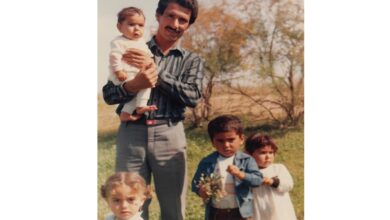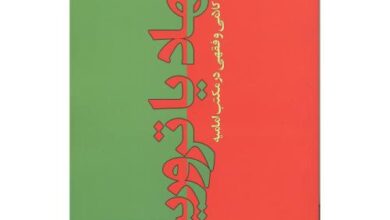Association for Defending Victims of Terrorism – Trans National Institute (TNI) reported, the nexus between the arms trade and forced displacement is rarely explored and the role of European arms trade policies that facilitate gross human rights violations in third countries is often absent from displacement and migration studies. This report joins the dots between Europe’s arms trade and forced displacement and migration.
Arms and military equipment manufactured and licensed in Europe and sold to third countries provokes forced displacement and migration. This arms trade is motivated by how highly lucrative the industry is and current control and monitoring mechanisms facilitate rather than curtail problematic licensing and exportation.
The arms trade is political and is driven by profit but is under-regulated. Although other sectors ,such as food and agriculture, do not undermine the fundamental right to life and other human rights in the same way that the arms trade does, they are far more stringently regulated.
It is possible to methodically trace arms, military equipment and technology, from the point of origin and export to where these were eventually used, and document their devastating impact on the local population. The report confirms beyond any reasonable doubt that European arms are directly used not to defend populations or to enhance local or regional security as is often claimed, but to destabilise entire countries and regions.
The arms industry is involved in clear violations of non-transfer clauses and end user agreements (EUAs) despite a supposedly robust system of controls. The evidence shows that once arms are traded, and although they may be traced, it is virtually impossible to control how they may eventually be used. Furthermore, although importing countries were known to have breached EUAs, EU member states continued to sell them arms and military equipment.
Regardless of whether arms were exported to official state security forces or were eventually used by non-state armed actors, or whether EUAs and other control mechanisms were respected, the result was the same – European arms were used in military operations that led to destabilisation and resulting forced displacement and migration. The destabilisation, facilitated by arms supplied by Europe, then contributed to Europe hugely expanding its border security apparatus to respond to the apparent threat posed by refugees attempting to arrive and seek asylum.
European countries are among the top exporters of lethal arms equipment worldwide ,comprising approximately 26% of global arms exports since 2015. The top five European arms exporters are France Germany , Italy , Spain and the UK – together accounting for 22% of global arms exports in the 2016–2020 period. Arms exports from Bulgaria , Croatia and Romania have soared in recent years, a large proportion of which is exported to West Asian
countries. For example, before 2012, Croatia exported ammunition worth less than €1 million a year, but with the start of the Syrian war this surged every year to reach €82 million in 2016. The European Parliament called on Bulgaria and Romania to stop arms exports to Saudi Arabia and the US (if there was a risk that these arms may be diverted), so far to no avail. In Syria an estimated 13 million people need humanitarian assistance and more than half of the population remains displaced from their homes – including 6.6 million refugees living in neighbouring countries, such as Jordan and Lebanon, who subsequently attempt to flee to Europe in a reverse movement to the arms that displaced them. Another 6.7 million are internally displaced persons (IDPs) inside Syria.
Five case studies document that:
- 1. Italian T-129 ATAK helicopter components were exported to Turkey and used in 2018 and 2019in two attacks in the district of Afrin in Northern Syria as part of Operation Olive Branch and in Operation Peace Spring on the Turkish–Syrian border. According to UN figures, 98,000 people were displaced during the Afrin offensive between January and March 2018, while 180,000, of whom
. 2. Bulgaria exported missile tubes and rockets to Saudi Arabia and the US , which eventually ended up in the hands of IS fighters in Iraq . The equipment was diverted and used in Ramadi and the surrounding region, where the International Organisation for Migration reported that from April 2015, following the outbreak of the Ramadi crisis, over half a million people were displaced from Anbar province, of which Ramadi is the capital city, while 85,470 were displacedspecifi cally from Ramadi City between November 2015 and February 2016. Around 80% of all housing in Ramadi was severely damaged after the offensive. In 2017 another missile tube originating in Bulgaria was found to have been used by IS forces in the town of Bartella, located to the east of Mosul. At least 200,000 people from minority groups were displaced from the greater Mosul area between 2014 and January 2017. By July 2019, over two years after military operations had ended in Mosul, there were still over 300,000 people displaced from the city.
- 3. British , French , and German components and production capacity, including missiles, missile batteries, and a bomb rack, were exported to Turkey , where they were mounted on Turkish-made drones and exported to Azerbaijan . These same drones, loaded with European-manufactured arms components, were used in the 44-day conflict in Naghorno- Karabakh, which provoked the forced displacement of half of the region’s Armenian population –approximately 90,000 people .
- 4. Between 2012 and 2015 Bulgaria exported assault rifles, large-calibre artillery systems, light machine guns, hand-held under-barrel and mounted grenade launchers to the Democratic Republic of Congo’s (DRC) national police and military. The conflict in DRC is one of the world’s longest, yet Europe continues to supply arms that are used to perpetrate gross human rights violations. In 2017, Serbia exported 920 assault rifles and 114 light machine guns that were originally manufactured in Bulgaria . That same year, 2,166,000 people were forcibly displaced , making it one of the worst since the conflict began. Specifically, Bulgarian weapons were in use in North Kivu in 2017 coinciding with the forced displacement of 523,000 people .
- At least four Italian Bigliani-class patrol boats were donated to Libya and used by its coastguard to forcibly pull back and detain migrants who were fleeing its shores. In 2019, the Libyan coastguard mounted a machine gun on at least one of these boats and used it in the internal conflict against the Libyan National Army. Many of those fleeing Libya had most likely already fled other conflicts in other African and West Asian countries that may have purchased or were in receipt of European arms, so that at each step along their journey from displacement to migration, the European arms trade is making massive profits by firstly displacing them, and then later deterring and pushing them back.




